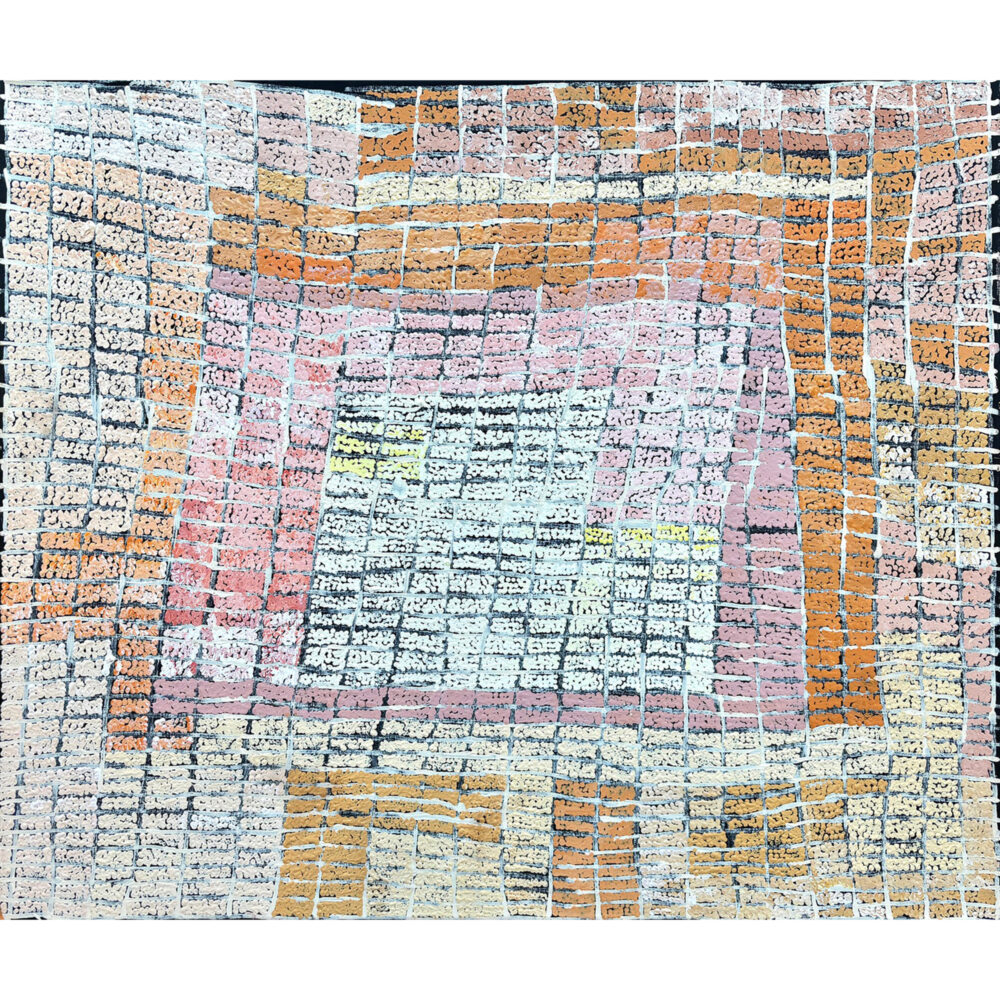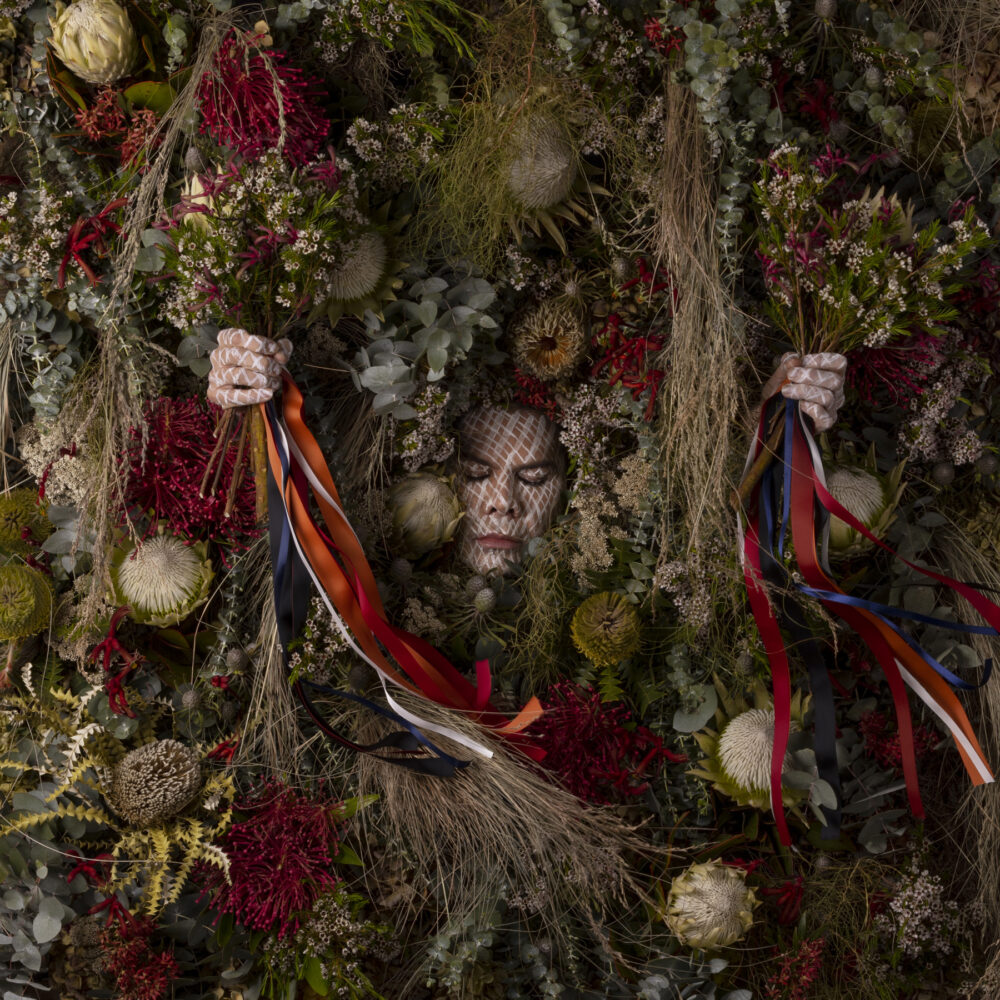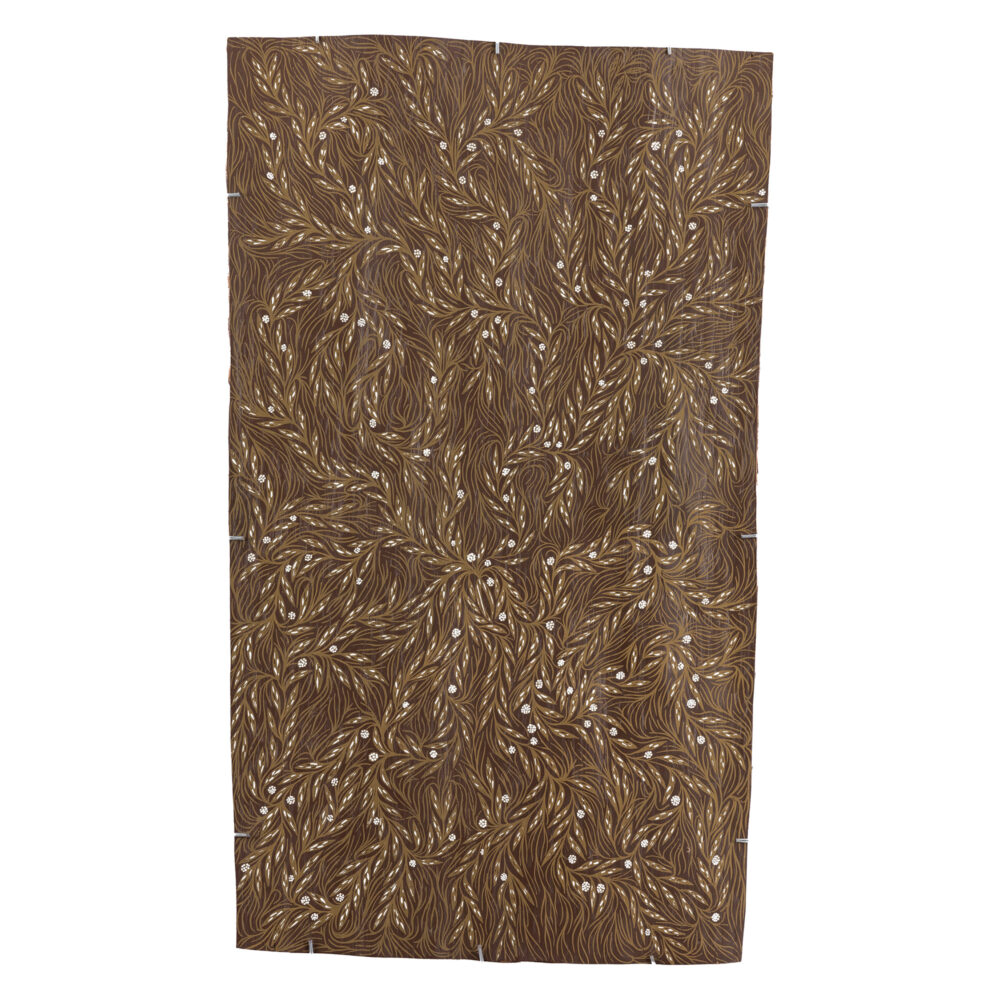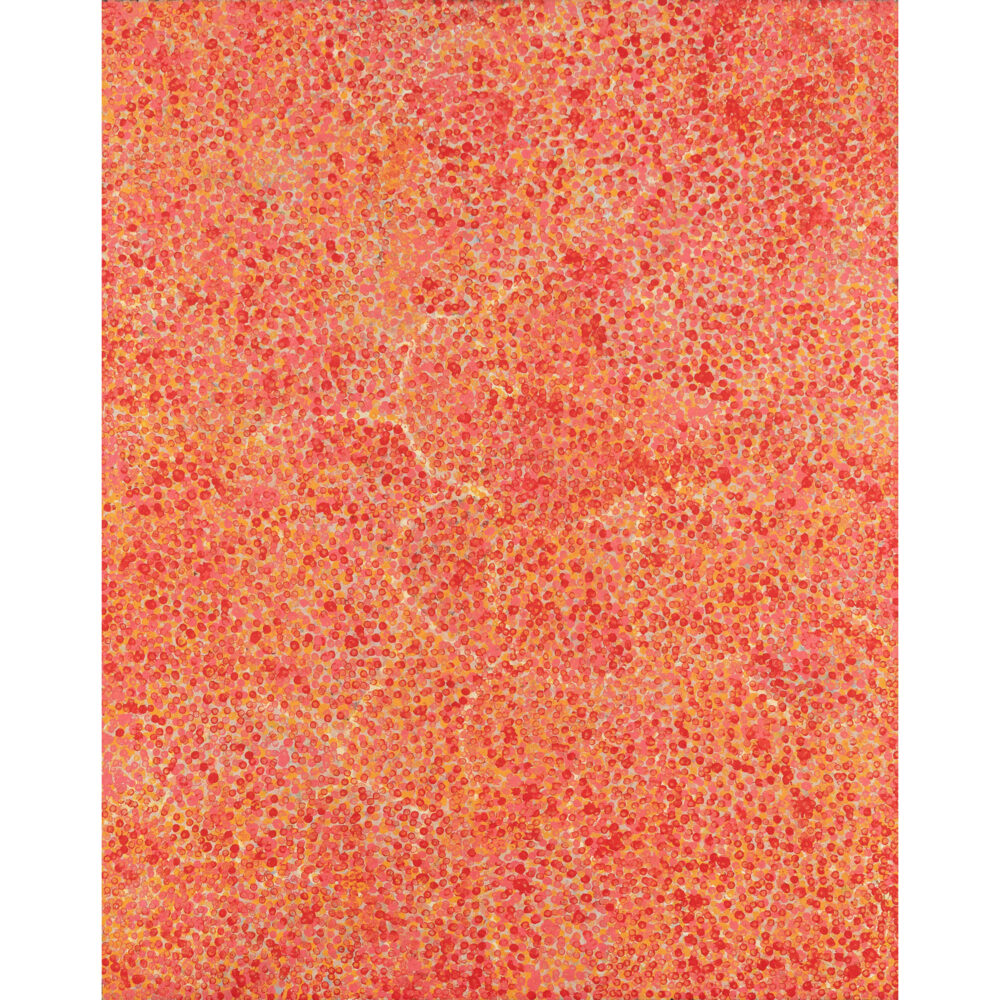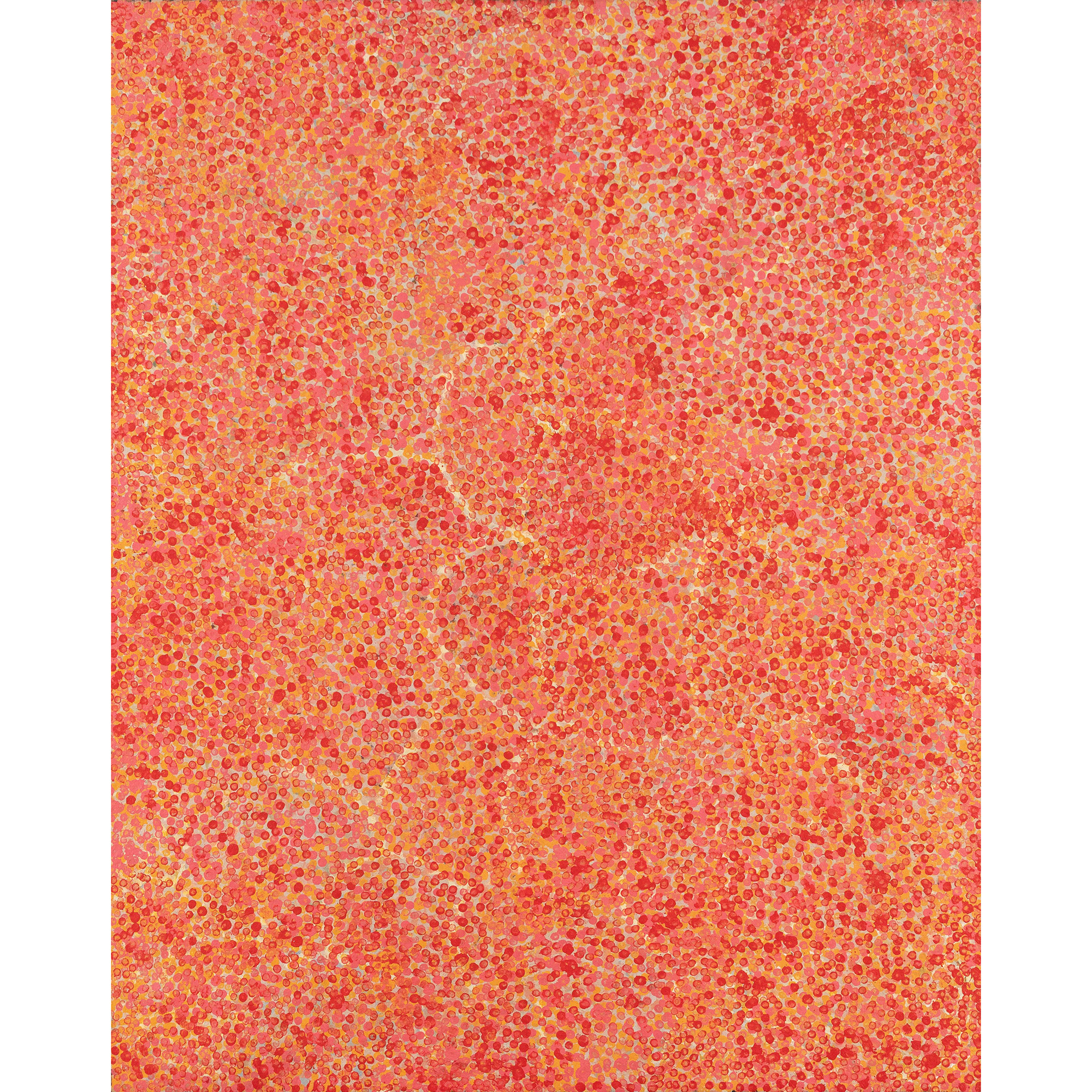
Emily Kam Kngwarrey started painting in her late seventies, drawing on her deep cultural knowledge as an Anmatyerre elder and guardian of women’s Dreaming stories in Alhalkere. In just eight years, she became one of the most celebrated and in-demand Australian artists of the late 20th century. Her expressive and flowing paintings reflect the natural rhythms of the desert and the deep spiritual connection she had with her Country.
Her art combines traditional ceremonial meaning with abstract styles. Every painting is both a creative act and a cultural statement. Her work is now in major collections, including the National Gallery of Australia, the National Gallery of Victoria, QAGOMA in Brisbane, and TATE Modern. From late 1992 and 1993, her style shifted. Her paintings became covered in dense dot fields, replacing the lines and shapes of her earlier works. She used stronger, more vibrant colours and unexpected contrasts. In Untitled (Alhalkere) (1992), for example, bold bursts of orange and red roll off the edge of the canvas, giving the sense of a storm building across the land.
At this time, she also tried new tools and methods. She worked on bigger canvases and used longer brushes to make wider, freer marks. By trimming her brushes, she created different textures in her dotting technique. This period marked a powerful evolution in her practice.
Kngwarrey has featured in major exhibitions, such as the 1997 Venice Biennale, Utopia: The Genius of Emily Kame Kngwarreye (shown in Osaka, Tokyo and Canberra, 2008), Major eponymously titled retrospective shows at the National Gallery of Australia (Canberra, Australia, 2023–24), and Tate Modern (London, England, 2025), her first in Europe. Confirming her status as one of Australia’s greatest artists, Indigenous or otherwise, Kngwarreye continues to change the way people around the world see Australian art.
Untitled (Alhalkere), 1992
PROVENANCE
Delmore Downs Station, 1992
Donald Holt / Delmore Downs
SMEG Appliances / Jim Woodward Collection, Sydney
Thence by descent Erica Krebs-Woodward, Sydney
Private Collection, Sydney
$500,000 USD
Emily Kam Kngwarrey started painting in her late seventies, drawing on her deep cultural knowledge as an Anmatyerre elder and guardian of women’s Dreaming stories in Alhalkere. In just eight years, she became one of the most celebrated and in-demand Australian artists of the late 20th century. Her expressive and flowing paintings reflect the natural rhythms of the desert and the deep spiritual connection she had with her Country.
Her art combines traditional ceremonial meaning with abstract styles. Every painting is both a creative act and a cultural statement. Her work is now in major collections, including the National Gallery of Australia, the National Gallery of Victoria, QAGOMA in Brisbane, and TATE Modern. From late 1992 and 1993, her style shifted. Her paintings became covered in dense dot fields, replacing the lines and shapes of her earlier works. She used stronger, more vibrant colours and unexpected contrasts. In Untitled (Alhalkere) (1992), for example, bold bursts of orange and red roll off the edge of the canvas, giving the sense of a storm building across the land.
At this time, she also tried new tools and methods. She worked on bigger canvases and used longer brushes to make wider, freer marks. By trimming her brushes, she created different textures in her dotting technique. This period marked a powerful evolution in her practice.
Kngwarrey has featured in major exhibitions, such as the 1997 Venice Biennale, Utopia: The Genius of Emily Kame Kngwarreye (shown in Osaka, Tokyo and Canberra, 2008), Major eponymously titled retrospective shows at the National Gallery of Australia (Canberra, Australia, 2023–24), and Tate Modern (London, England, 2025), her first in Europe. Confirming her status as one of Australia’s greatest artists, Indigenous or otherwise, Kngwarreye continues to change the way people around the world see Australian art.


